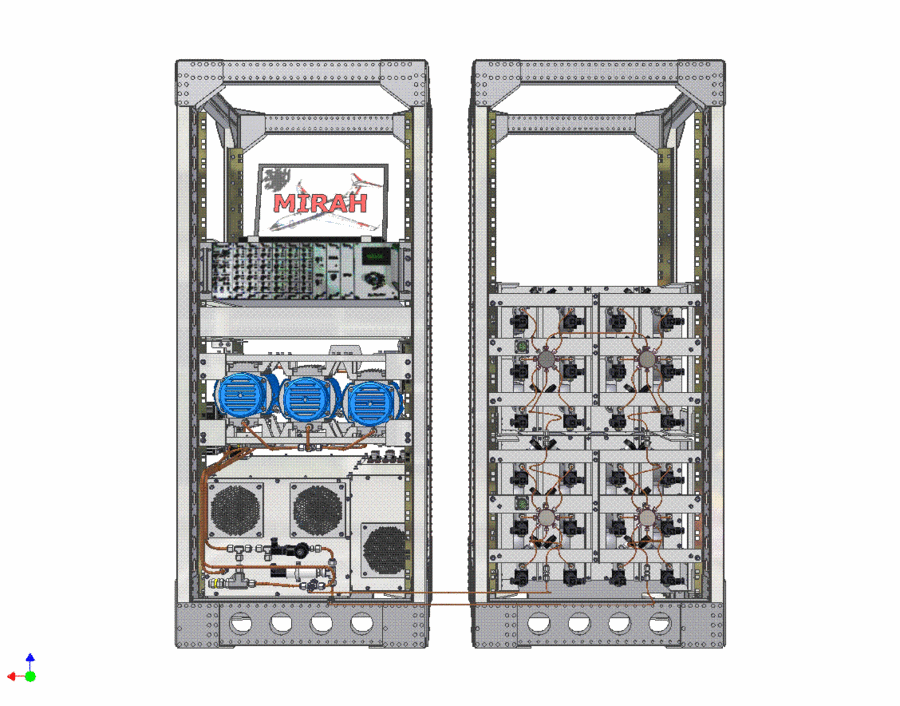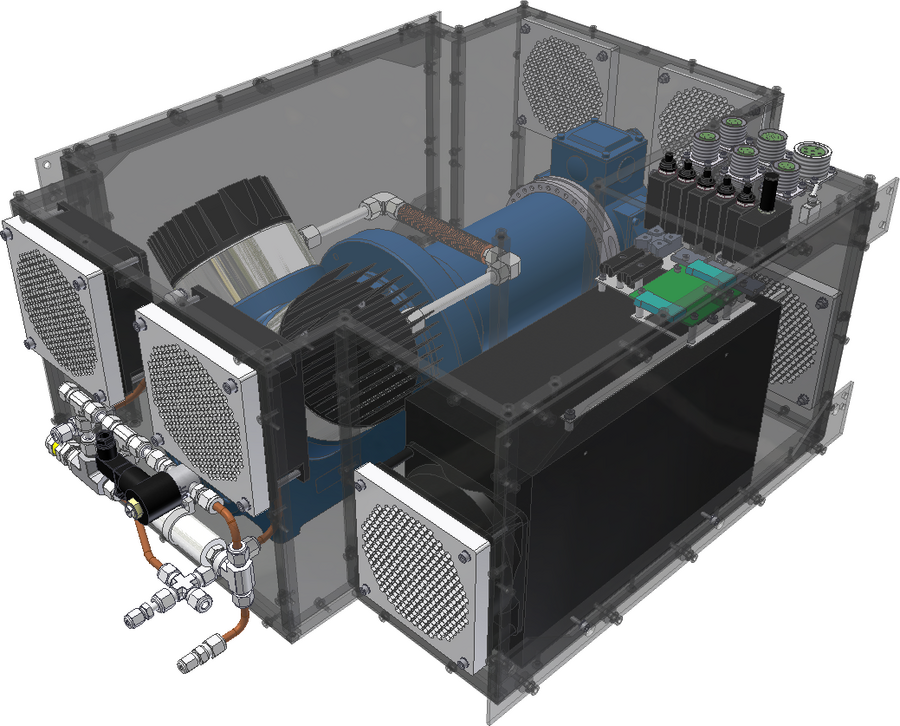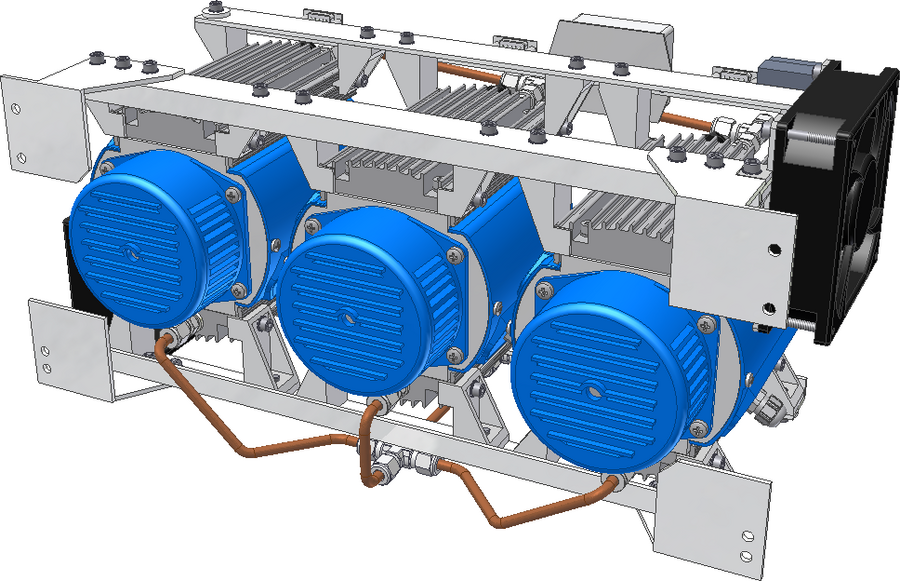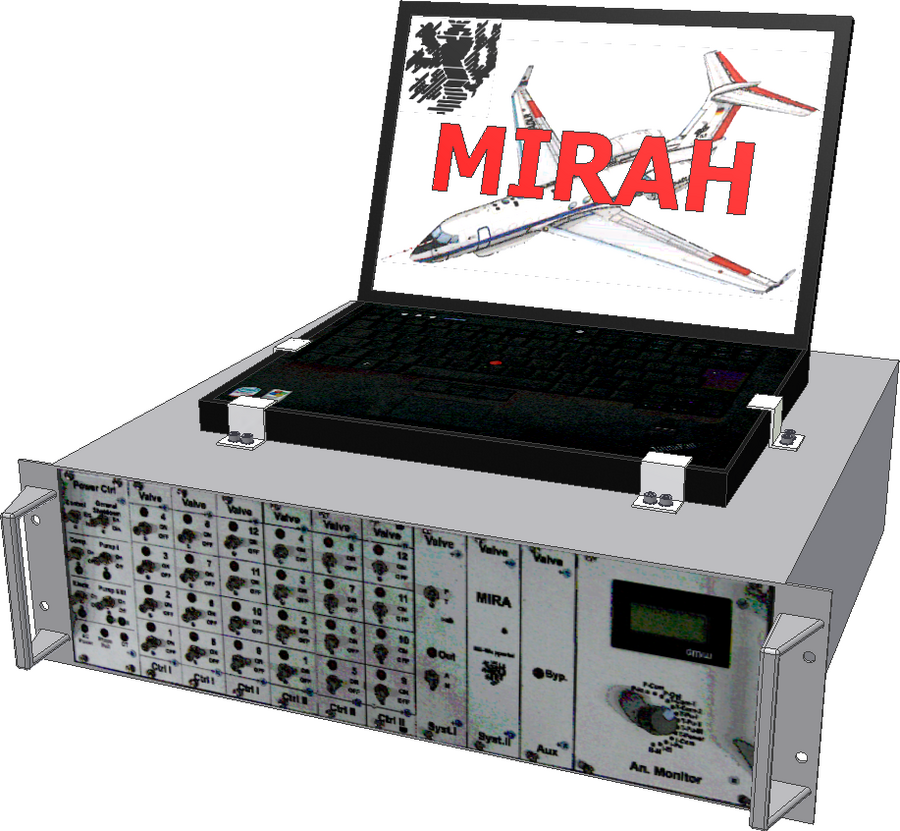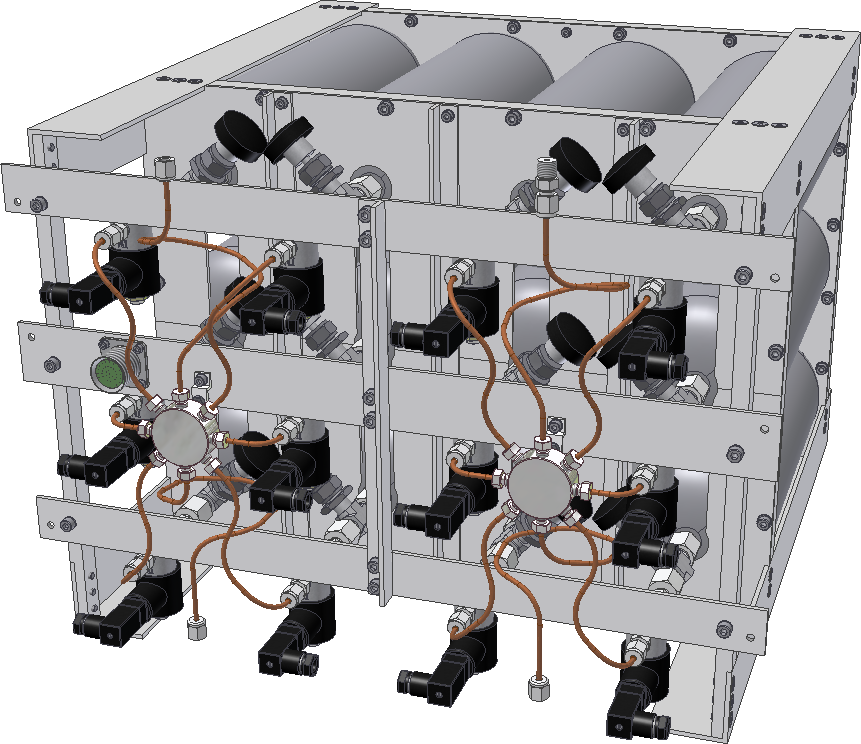MIRAH - the isotope collector on the HALO high-altitude research aircraft
Deployments of the sampler
HALO-TECHNO-Mission
The functional capability of the air sampler MIRAH was tested for the first time under normal operating conditions within the framework of a technological campaign (TECHNO mission) with the research aircraft HALO. The very first flight took place on 28 October 2010, which was the first HALO flight with scientific instruments on board. In the total of four flights, the air sampler worked reliably and error-free. Not only very important experiences in the flight operation of the device, but also up to 24 air samples on each individual flight could be collected. A sampling takes about 35 liters and lasted only a few minutes.
First operational flight
HALO-Mission TACTS
The upper troposphere / lower stratosphere (UT/LS or in german OT/US) region plays a key role in the chemical and radiation budget of the atmosphere. Ozone and water vapor as greenhouse gases show their greatest climate effectiveness around the tropopause. Changes in the chemical composition of the UT/LS strongly influence the radiation budget of the atmosphere. In fact, a significant temporary decrease of ozone was observed in the lower stratosphere of the mean latitudes. But trends are not yet well understood in the LS due to the strong dynamic variability. Furthermore they vary strongly with season, place and year. Therefore, it is essential to obtain a better quantitative understanding of the variability and seasonal variations in the chemical composition and the variation controlling processes in the UT/LS.
A major focus of the TACTS mission (Transport and Composition in the UT / LMS) in the summer of 2012 is to measure the trace gas composition in the area of the UT/LS of the subtropics and mid-latitudes to improve the quantification of the air transport around the subtropical jet during the summer-winter transition. During TACTS measured trace gases and observed trace gas correlations help to answer the question whether or not trace gas anomalies were a meteorological exception in the US (e.g., during 2001 and 2003), or whether they were the first signatures of changing transport routes associated with climate change.
Planned studies are:
- Budget studies of the origin of air masses in the US, based on trace gas measurements,
- Water vapor (total water and gas phase water), water vapor isotopes and particle measurements primarily as proxies for dehydration routes from the troposphere to the US,
- Studies on air mass origin based on correlation analyzes,
- Observation of short-lived trace gases such as hydrocarbons and some halocarbons and their photochemical decomposition products to determine rapid transport from the maritime and continental boundary layer to the US,
- Intensive modeling and meteorological support.
HALO Mission OMO
The extratropic free troposphere between 8 and 15 km of altitude is a sensitive region of the atmosphere regarding climate effectiveness and chemical composition. Their upper region couples the stratosphere with the troposphere. In the Northern Hemisphere, the free troposphere is substantially affected by the extensive transport of air pollution, supported by episodic upward transport of pollutants by convection events and gradual upward transport in the so-called warm conveyor belts of cyclonic disturbances.
The decomposition rates of natural and anthropogenic substances as well as the formation of ozone are largely controlled by oxidation reactions in which HOx radicals play a key role. Since only few measurements of radicals and precursor substances in the free troposphere are available, previous estimates of the atmospheric composition and climate change are strongly based on simulations with inadequately tested chemistry and general circulation models.
Through the OMO measurement campaign in the summer of 2013, models will be tested and improved by supporting the calculations of radical formation and degradation processes by means of extensive in situ observations with the HALO high-altitude research aircraft.
The OMO (Oxidation Mechanism Observations) campaign aims to determine the conversion rates of natural and anthropogenic substances by oxidation processes in the troposphere. These in turn influence the lifetime and global distribution of air pollution and various greenhouse gases, including tropospheric ozone.
The focus of the measurement campaign is the measurement of HOx radicals as well as the quantification of the main sources and sinks in order to test model calculations. The following aspects are focused on:
- Oxidation processes and free radical chemistry,
- Wide transport of air pollution,
- High-convection and lightning.

